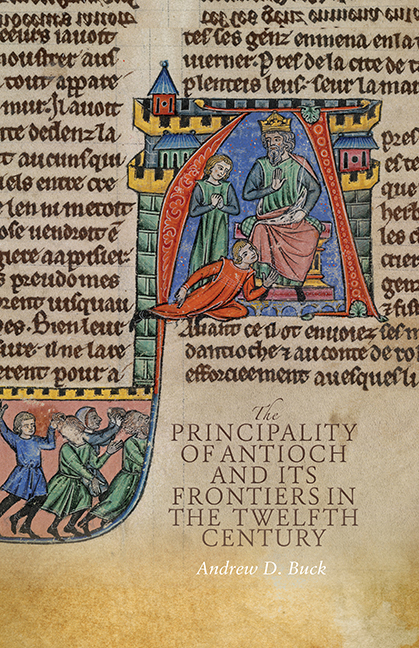Book contents
- Frontmatter
- Contents
- List of Maps
- Acknowledgements
- Abbreviations
- Introduction
- 1 The Extent of the Principality
- 2 The Rulers of Antioch
- 3 Central Governance and Military Service
- 4 Lordship in the Principality
- 5 A Frontier Society? The Nature of Intercultural Relations
- 6 Relations with Byzantium
- 7 Antioch and the Latin East
- Conclusion
- Bibliography
- Index
7 - Antioch and the Latin East
Published online by Cambridge University Press: 09 May 2017
- Frontmatter
- Contents
- List of Maps
- Acknowledgements
- Abbreviations
- Introduction
- 1 The Extent of the Principality
- 2 The Rulers of Antioch
- 3 Central Governance and Military Service
- 4 Lordship in the Principality
- 5 A Frontier Society? The Nature of Intercultural Relations
- 6 Relations with Byzantium
- 7 Antioch and the Latin East
- Conclusion
- Bibliography
- Index
Summary
As one of four polities created in the wake of the First Crusade, the principality of Antioch was an important part of the Latin East's tumultuous development. With crusade veterans often heading these fledgling states, the social and political bonds that had underpinned the venture's success proved an important catalyst to their cohesion and growth, a process otherwise classed as a ‘confraternity’ or the Verband der Kreuzfahrerstaaten (‘association of the crusader states’). Thus, Bohemond offered his support to Edessa at Harran in 1104, and even when both Tancred or Roger sought to expand Antioch's influence over Edessa and Tripoli before 1119 (moves which did not prove popular within the latter states), open conflict was largely prevented through intervention from Jerusalem – overlords of at least Edessa – or a shared sense of Latin, or Frankish, identity. After Roger's death at Ager Sanguinis, King Baldwin II even stepped in to secure Antioch, over the course of a seven-year regency, until Bohemond II took up his inheritance.3 Coordination between the states, albeit not continuous, was therefore largely preserved, with common purpose and the leadership of crusade veterans also supplemented by a network of marriage alliances and political connections. This dynamic was altered in 1131, however, as Bohemond II's death was swiftly followed by those of the last two crusaders in power: Baldwin II of Jerusalem and Joscelin I of Edessa. Control of the Latin East now passed entirely to the so-called ‘second generation’, with Western migrants presiding over Jerusalem and Antioch, and sons of crusaders ruling Edessa and Tripoli. With these changes, new bonds and allegiances had to be forged.
Despite this, no systematic study has been carried out to outline Antioch's place within this evolving political framework, although studies have examined certain elements of its links to the wider Latin East. In relation to the counties of Edessa and Tripoli, Monique Amouroux-Mourad has noted the principality's growing, but difficult, relationship with Edessa in the 1130s and 1140s, while both Mayer and Jean Richard have inspected the eventual unification of Antioch and Tripoli after 1187.
- Type
- Chapter
- Information
- Publisher: Boydell & BrewerPrint publication year: 2017

